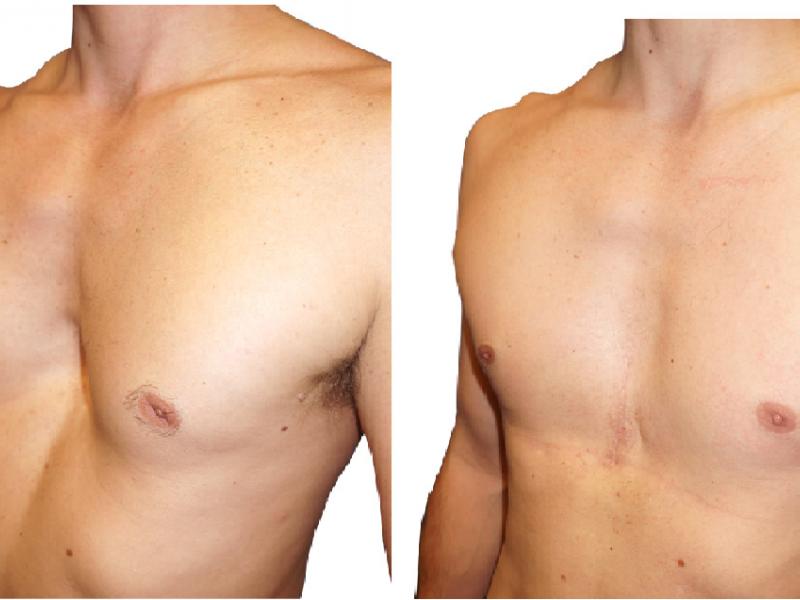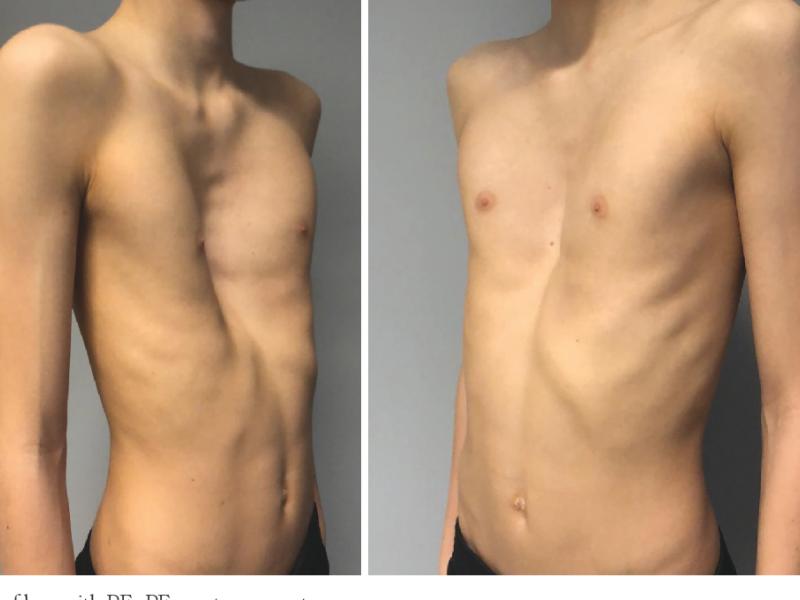Pectus excavatum is a chest deformity characterized by a concave or sunken appearance of the chest wall, particularly around the sternum. It is the most common chest deformity and can lead to breathing difficulties that may require corrective surgery.
Turquie Santé provides medical and paramedical experts to help you achieve your treatment of pectus excavatum in Turkey at competitive cost.
We're Here to Help.
- Children and adults with a funnel chest
- Injury to surrounding organs: lungs, heart, vessels...
- Treatment of pectus carinatum (carina thorax)
- Poland syndrome
- about 1 hour
- Between one and 3 weeks
- 80%
What is a pectus excavatum?
Funnel chest or pectus excavatum is a pathogenesis that affects the chest of both men and women, giving it a bowl shape. Few people know that the deviation of the central rib cage from ribs 3 to 7 is treatable, but it is the most common deformity of the sternum.
Indications for funnel chest surgery
This condition worsens during adolescence, usually from the age of 13. The thorax is characterized by a soft aspect throughout childhood and only becomes rigid after puberty. It is during this phase that the thorax becomes deformed, causing pain and even multiple complications such as :
- Chest pain
- Respiratory discomfort
- Tachycardia
- Back pain
- Lack of stamina (when exercising)
Indeed, having a hollow chest is largely an aesthetic embarrassment, affecting the psychology of the patient. To solve this problem, the most recommended treatment is often surgical.
Therefore, pectus excavatum surgery can be performed for both aesthetic and functional reasons.
Diagnosis of pectus excavatum
The diagnosis of pectus excavatum in Turkey can be made with several tests recommended by your surgeon to check for associated heart and lung disease.
Chest X-ray test
A chest X-ray can detect and visualize the indentation in the sternum, helping to diagnose the disease. A surgeon will probably require this type of test to assess the severity of the thoracic deformity.
Funnel chest scan
This test is used to detect the narrowing of the lungs and heart chambers. The thorax scanner emits electromagnetic rays, which are used to obtain cross-sectional images of the pectus excavatum. These show the structure of the bones and that of the organs and tissues delimiting the pectus. This enables the extent and severity of the deformity to be assessed. Thoracic MRI, on the other hand, provides highly detailed images of the diaphragm cavity.
Ultrasound technique (echocardiography)
Echocardiography, or ultrasound of the thorax, enables us to visualize the chest and especially the heart. This allows us to monitor muscle function and visualize the impact of pectus excavatum. These images facilitate functional analysis of the chest, heart, and valves. As a result, they detect any anomalies that may influence thoracic deformation.
Lung examination
The lung examination uses two types of tests to measure the quantity and speed of air expiration in the lungs: spirometry and expiratory flow measurement. The latter are also used to detect airway obstructions.
Shrunken breasts Treatment
Pectus Excavatum treatment in Istanbul, Turkey consists of several techniques. As the approach choice depends on the condition's severity. Here is a summary of the different options:
Surgery based on 3D implant
Pectus operation using 3D implant consists of inserting silicone implant which is conceived to fill the chest cavity. This 3D prosthesis is custom-made to fit the shape of the patient's chest perfectly. The procedure is typically performed by endoscopy for great precision.
This prosthesis, based on solid silicone elastomer, presents no risk of tearing and has an estimated lifespan of 30 years.
Treatment of torso deformity with fat injection
The famous principle of lipofilling is also applicable in the treatment of pectus excavatum.
Usually, the surgeon takes autologous fat from the patient and then transplants it into the chest cavity to compensate for the funnel.
The Nuss technique
This is a minimally invasive technique that involves making incisions in the side wall of the chest to insert metal bars in a semicircle. The metal will then exert pressure to raise the sternum and correct the malformation over time. The surgeon will remove the bars once the sternum is well positioned, this can take between 2 and 3 years.
Sternochondroplasty procedure
For severe functional complications, another technique called sternochondroplasty is also proposed, which aims to modify the shape of the costal cartilage and the thoracic cage using titanium plates. This procedure is invasive and subsequently painful for some patients.
Vacuum Bell Treatment
The recent Vacuum Bell technique has been approved to treat the funnel breast.
During the procedure, doctors use silicone suction cups to lift the sternum in children, which will reduce the malformation of the torso. The procedure is potential and takes 30 minutes a day for about 3 years. It is intended to prevent the pectus from worsening over the following years.
Cost of pectus excavatum treatment in Turkey
Turquie Santé provides you with a professional team that will accompany you and provides you with all the necessary information for your treatment in Istanbul, Turkey. Thus, we offer high-quality services with competitive cost to meet your needs. Ask for your free quote now.
Share this page
Among our doctors
The recommended age for initiating treatment of pectus excavatum may vary according to several factors, including the severity of the thoracic deformity and the individual's growth. In general, treatment of pectus excavatum is often initiated during childhood or adolescence, when growth is still underway.
Surgery is generally recommended for older adolescents and adults with severe pectus excavatum, or who have respiratory or cardiac problems related to the thoracic deformity.
Pectus excavatum surgery can present a few risks:
- Bleeding: Surgery can lead to excessive bleeding, although it is rare.
- Infection: Infection may develop at the surgical site.
- Post-operative pain and discomfort: Surgery may cause significant pain during the recovery period.
- Displacement of metal bar: In Nuss surgery, where a metal bar is inserted to straighten the deformity, there is a risk of displacement or rotation of the bar.
- Irritation or allergic reaction to the materials used: Some people may experience an allergic reaction or skin irritation to the materials used in surgery.
Potential benefits of funnel chest surgery:
- Aesthetic correction: Surgery aims to straighten the thoracic deformity, which can improve physical appearance and self-esteem.
- Improvement of respiratory symptoms: For some people, surgery can improve breathing capacity and reduce symptoms such as shortness of breath.
- Improved cardiac symptoms: In some cases, surgery can help reduce cardiac symptoms related to heart compression.
- Improved quality of life: Surgical correction can enable people with pectus excavatum to lead more active lives and participate in physical activities without restriction.
For a chest wall disorder, we recommend consulting an orthopedist specializing in the treatment of thoracic deformities.
The specialist will carry out a full assessment of the condition, may recommend further diagnostic tests, and discuss available treatment options.
Pectus excavatum is a thoracic deformity that primarily affects physical appearance rather than the functionality of internal organs.
In general, pectus excavatum itself has no direct impact on life expectancy, which is considered the same as the general population.
Consequently, people with pectus excavatum can live a normal, healthy life. However, some cases of respiratory discomfort due to compression of the heart may require surgical intervention.











